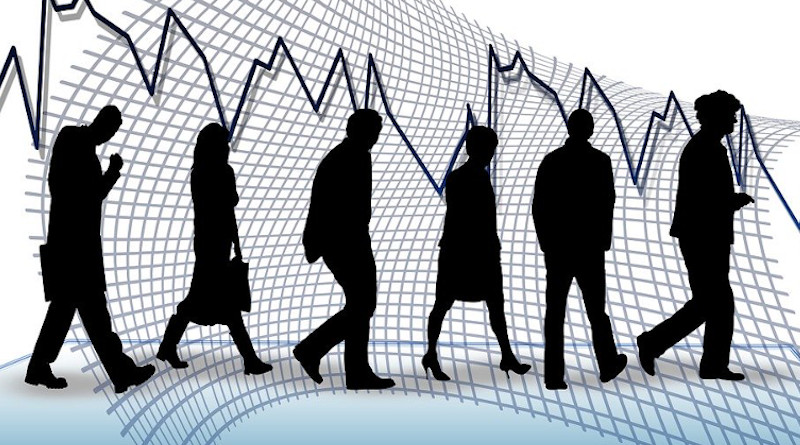US Labor Market Ahead Of Election Day – OpEd
By Andrew Moran*
Back in the Middle Ages of 2019, if you were asked: “Are you better off now than you were four years ago?” you probably would have given a resounding yes. Today, however, if you were pressed on the same question, your response might be a bit more along the lines of: “Hell no!” And this does not bode well for President Donald Trump, who is trying to stave off a sleepy but establishment-supported Joe Biden in less than a month. The economy was the president’s Super Bowl or World Series championship, and now it might potentially be seeking shelter in a Delaware basement from the perpetual thunderstorms engulfing the country. The Dow Jones Industrial Average and the Nasdaq Composite Index may have reclaimed most of their gains, but the labor market has not recovered even half of the number of lost positions from earlier this year. How grim is the job front?
A September To Dismember?
The United States economy has only recovered about 11.4 million jobs of the more than 23 million positions lost at the height of the COVID-19 public health crisis. While jobs are being added every month, the recovery is going slower than many had anticipated a few months ago. The easy part is finished – now comes the hard work.
According to the Bureau of Labor Statistics (BLS), the U.S. created 661,000 new jobs in September, down from the whopping 1.489 million positions in August. The unemployment rate declined from 8.4% to 7.9%, which is the pandemic’s lowest level. The market had forecast 850,000 new jobs and a jobless rate of 8.2%. The labor force participation rate fell to 61.4%, but average weekly hours and year-over-year average hourly earnings picked up some steam.
The monthly jobs report came a day after the Department of Labor released the latest initial jobless claims. In the week ending September 26, the number of Americans filing for first-time unemployment benefits clocked in at a six-month low of 837,000. This was the figure that dominated business headlines, but the real figure should have been 1.49 million. Why? In addition to the 837,000, more than 650,000 people submitted claims under the Pandemic Unemployment Assistance Act, a federal program that allows self-employed workers to apply for benefits.
What is worse is that researchers still do not have the latest figures from California. The state is not accepting new applications until sometime this month due to backlogs and fraud investigations. This has led the Labor Department to use The Golden State’s most recent jobless claims, which could be misleading since the data would be outdated.
Best Of Times, Worst Of Times
What else do we know about today’s battered and beaten labor market amid the Coronavirus outbreak? The expiration of the Paycheck Protection Program (PPP) has not triggered a tidal wave of unemployment. Many experts had anticipated that PPP funds drying up would force companies to terminate their employees, but this has not been the case – so far.
Many Republican-led states seem to be recovering at a better rate than Democrat-led jurisdictions. With fewer Coronavirus-related restrictions and a larger number of business-friendly policies, these places are witnessing better job creation and less unemployment.
Millions of Americans could permanently lose their jobs. BLS data show that the number of people completely losing their old jobs has risen to a seven-year high of 35.8%, or 3.8 million. The U.S. economy needs to tap into some good old dynamism to get these positions back. Is America up for the challenge?
A standard alternative measurement of unemployment is the U6. Libertarian-leaning economists often utilize this because it includes workers who can only locate part-time work or are too discouraged to look for employment opportunities. This was the de facto measurement until the 1970s. If you study the so-called real unemployment rate, then the figure stands at 12.8%.
Put simply, nobody knows what is going on. How many Americans are unemployed? How many people are applying for unemployment assistance? Are duplicate errors and fraud distorting the numbers?
Winter Is Coming
Brian Coulton, the chief economist at Fitch Ratings, recently wrote in a research note: “The easy part of the labor market recovery is largely behind us now.” The fourth quarter should offer a clearer indication of where the U.S. economy is heading in 2021, whether with Trump or Biden at the helm. Right now, the medium-term future seems bleak, with some of the country’s biggest companies, such as Goldman Sachs, Disney, and Raytheon Technologies, announcing hundreds or thousands of layoffs. It is important to note that the Coronavirus-induced recession is not even the real financial crisis – that comes later. The next economic collapse will be more severe thanks to near-zero interest rates, astronomical debt levels, and bubbles.
*About the author: Economics Correspondent at LibertyNation.com. Andrew has written extensively on economics, business, and political subjects for the last decade. He also writes about economics at Economic Collapse News and commodities at EarnForex.com. He is the author of “The War on Cash.” You can learn more at AndrewMoran.net.
Source: This article was published by Liberty Nation

